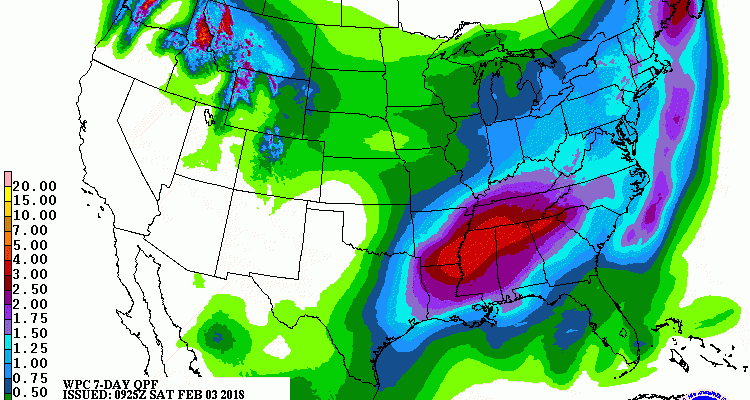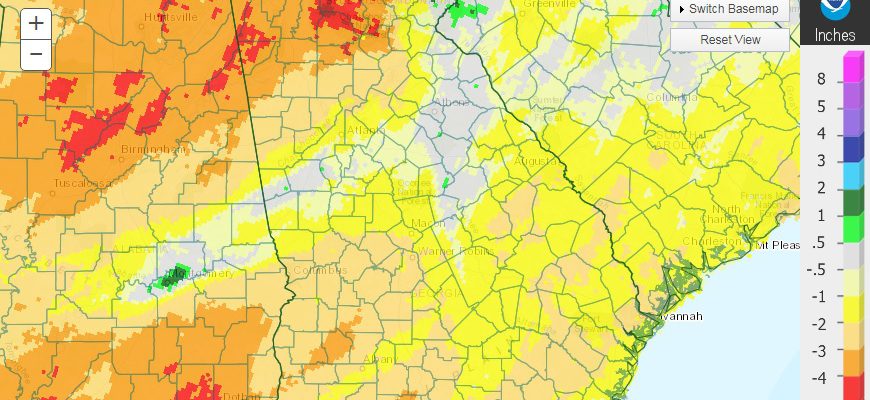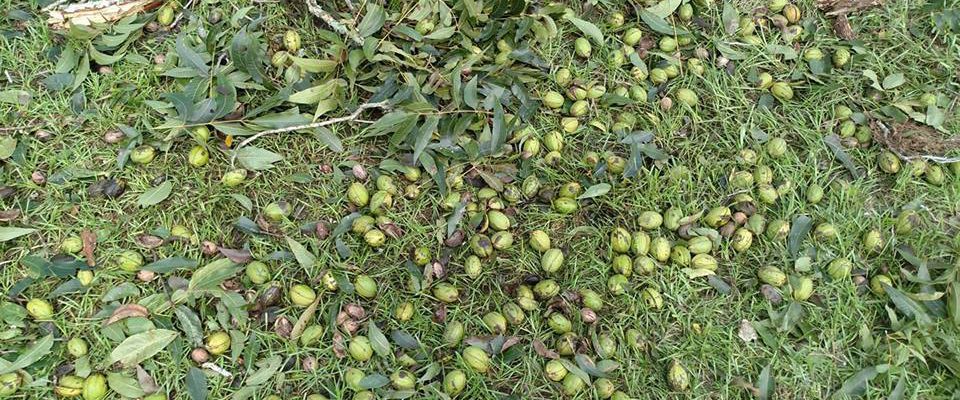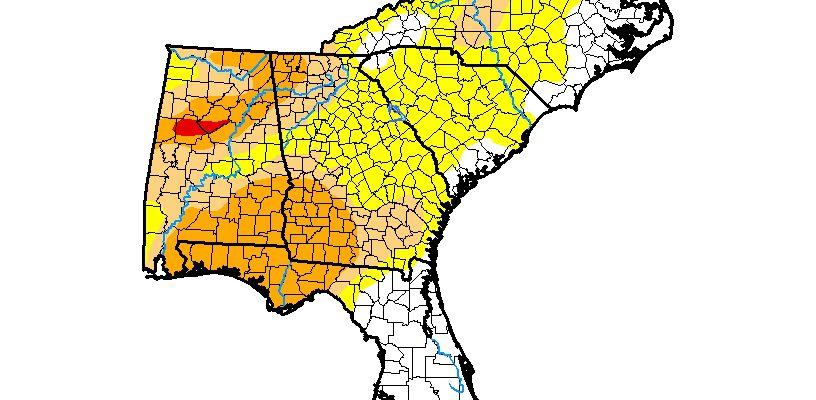-

The latest 7-day QPF map shows that most parts of the Southeast will receive at least normal rain for the next week. For southern parts of the region, most of what you get will happen in the next three days, with drier conditions after that. For northern parts of the region, rain will continue to…
Posted in: Climate outlooks -

Chilly temperatures enveloped Georgia in January 2018, with most stations reporting between two and four degrees F below normal. A big change from last year when many locations were about 9-10 degrees above normal! In fact, nearly all of the eastern half of the US was well below normal this year, with very warm conditions…
Posted in: Climate summaries -

The Georgia Farm Monitor has an interesting 3-minute video on continuing clean-up activities of Georgia pecan farmers following the devastation from Hurricane Irma, which not only blew down many nuts but also uprooted trees and damaged equipment. Supplies of replacement trees are also limited due to the high demand. You can view it at https://www.youtube.com/watch?v=5CbIQLYfDGQ&feature=em-subs_digest. …
-

Since the Super Bowl is this weekend, the USDA thought it would be fun to share some facts about how the Super Bowl shaped the chicken industry. Thanks to Growing Georgia for bringing it to my attention.
-

The North Carolina climate summary for January 2018 is now available from the State Climate Office of NC. You can read it at https://climate.ncsu.edu/climateblog?id=254&h=5666e5c1.
Posted in: Climate summaries -

The latest Drought Monitor, released this morning, shows that extreme drought (D3) was introduced to central Alabama this week. Generally drought was reduced or removed from the Carolinas and Virginia while it expanded and got stronger in Alabama and Georgia. One area that is getting worse is northwest Georgia, now at severe (D2) drought levels,…
Posted in: Drought -

The latest outlook from the Climate Prediction Center shows that February and February through April has a continuation of the expected weak La Niña pattern across the Southeast. That means that Florida and southern Georgia and Alabama are most likely to be warmer and drier than normal. Other areas of the Southeast have equal chances…
Posted in: Climate outlooks